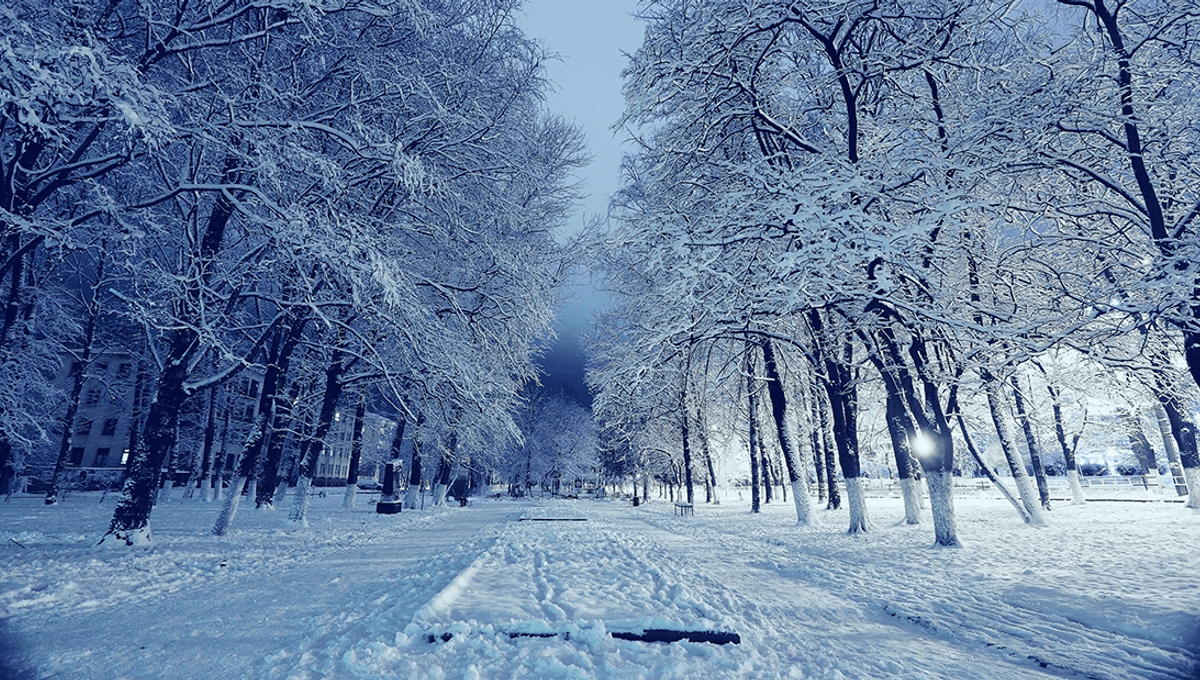
From January 17 to February 5, 1947, Yukon, northwest Canada went through a cold spell, hitting the lowest temperature of -64°C (-84°F) on February 3.
Weather observer Gordon Toole measured the lowest temperature at Snag’s tiny airport. The thermometer he used didn’t go below -62.2°C (-80°F), meaning he had to record it by marking an extra line. It was too cold for pens to function, so he had to scratch it onto the thermometer using a set of dividers.
At those temperatures, people’s breath turned to a white powder in the air, making a tinkling sound as it did so. As delightful as that sounds, staying out in the weather for more than a few minutes would cause exposed skin to freeze, and hypothermia was a big risk.
One of the weirder effects, noticed by the residents of Snag, Yukon, where temperatures were coldest, was that sound began to travel differently. Toole, as he measured the temperature at the airport, could not see more than a few meters without his view being interfered by a cloud of frost fog. Yet he could hear dogs barking in the main village over 6 kilometers (3.7 miles) away, and ice that cracked in the White River about 1.6 kilometers (1 mile) away sounded “cracked and boomed loudly, like gun fire”.
What caused these weird sound effects? Sound does not travel in the same way at different temperatures. As well as moving slower in the cold, sound also travels further, if you happen to be near to the ground. When air near the ground is cold and the air above it is warm, sounds are refracted by the warm air toward the surface. The sound then bounces between the ground and the warm air, traveling much further along the ground than in warmer temperatures.
“A temperature inversion caused sound waves to bend back toward the ground rather than escaping upwards,” Environment Canada’s senior climatologist David Phillips told the National Post. “People at the airport could clearly hear dogs barking in town and townspeople talking as if they were close by instead of 5 kilometres [3 miles] away.”
Adding to the disorientating effect of hearing conversations from miles away, and the icy fog that surrounded them and diminished their vision, people in the town could see clouds of their frozen breath linger in the air for minutes at a time.
“It was unique to see a vapour trail several hundred yards long pursuing one as he moved about outside,” Toole said, according to website Canada’s History.
“Becoming lost was of no concern. As an observer walked along the runway, each breath remained as a tiny, motionless mist behind him at head level. These patches of human breath fog remained in the still air for three to four minutes, before fading away. One observer even found such a trail still marking his path when he returned along the same path 15 minutes later.”
If they had become lost, of course, they could merely have whispered that fact and be heard by a search and rescue team several miles down the road.
Source Link: On A Strange Day In Canada, People Could Hear Others Talking From 5 Kilometers Away